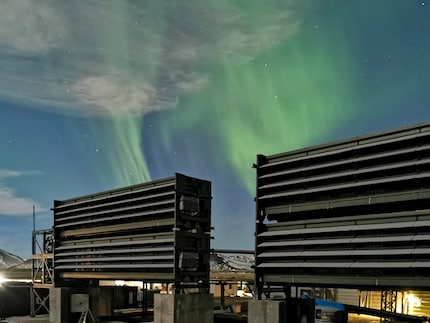
News + Trends
No Lego made from PET bottles: Manufacturer abandons recycling project
by Lorenz Keller

LEGO is increasingly focussing on sustainability and investing millions in climate projects. Nevertheless, the Danish company remains dependent on fossil fuels. Is this real responsibility - or clever greenwashing?
The LEGO Group recently announced its investment in carbon removal projects. With DKK 19 million (CHF 2.4 million), the company will invest in sustainable solutions such as biochar, accelerated weathering - a method in which crushed rock captures CO₂ from the atmosphere - and reforestation to offset its footprint. Annette Stube, Chief Sustainability Officer at LEGO, says about this step: «This will expand our knowledge of new technologies and practices to preserve a healthy planet for future generations.»
But how serious are these efforts really? Is LEGO on the road to true climate neutrality or is it just a clever PR strategy?
Investing in climate protection projects is undoubtedly a good step in principle. LEGO is at least showing that it is aware of the problem. The cooperation with the Zurich-based company Climeworks, which filters and stores CO₂ directly from the air, is another example of the Danes' efforts to offset emissions.

Another positive highlight is LEGO's decision to switch all packaging to paper in order to reduce the use of single-use plastic. Although this is not a revolution, it shows that the company is taking concrete measures to operate more sustainably, at least in some areas.
One major problem is the material issue of the bricks. LEGO had originally announced that it would switch to recycled PET bottles as the basis for its bricks. However, this plan was scrapped - on the grounds that the switch would not result in the desired reduction in the carbon footprint.
At least LEGO now uses bio-polyethylene (bio-PE) made from sugar cane for flexible elements such as plants and minifigure accessories. For transparent parts such as windows or lightsabers, LEGO uses recycled arMABS made from artificial marble kitchen worktops. Despite these advances, LEGO still relies on petroleum-based plastics, especially for the classic ABS bricks.
LEGO is struggling to develop sustainable materials that are also compatible with its own quality standards. This shows: The brand is facing a fundamental dilemma. On the one hand, it wants to become more climate-friendly, but on the other, the alternatives are not economically viable or practicable.
According to Neste, the world's largest manufacturer of renewable raw materials, fossil plastic costs only around half to a third of the price of sustainable alternatives. Lego CEO Niels Christiansen assures Reuters that these additional costs for the more sustainable building blocks are not passed on to consumers. Nevertheless, the question arises: who will bear the costs in the long term - LEGO or rather us customers?
The timing of the latest sustainability announcement is also noteworthy. LEGO has been criticised for the owner family's repeated use of private jets, which is a massive contradiction to its stated environmental goals. According to a report in the FAZ, one of the family's Falcon 8X private jets flew the 100-kilometre Billund-Odense route 57 times between 2020 and 2023.

The question arises as to whether the new carbon removal measures serve as a distraction from the real challenges. While offsetting measures are important, they do not solve the core problem: LEGO's toy production is still heavily dependent on fossil fuels.
The LEGO Group is undoubtedly one of the companies that visibly communicates its sustainability strategy to the outside world. The investments in climate projects are a step in the right direction - but they do nothing to change the fundamental problems. Truly sustainable action would mean radically reorganising the entire production process, even if this entails challenges and additional costs.
As long as LEGO does not consistently say goodbye to fossil raw materials, the suspicion remains that this is more a case of greenwashing than a serious transformation. The announced investments are good - but they must not conceal structural problems. The future will show whether LEGO lives up to its own sustainability claims or whether the beautiful green façade will crumble at some point. Without a genuine move away from fossil raw materials, LEGO's sustainability strategy will remain a patchwork quilt. The crucial question is: when will LEGO take the big leap?
I get paid to play with toys all day.
This is a subjective opinion of the editorial team. It doesn't necessarily reflect the position of the company.
Show all